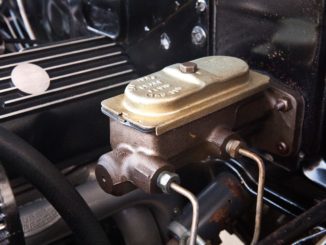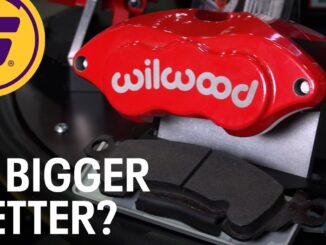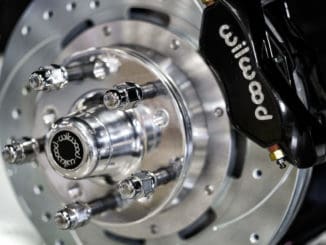
By
I have heard the arguments many times, claiming a properly maintained and working single reservoir master cylinder is just as safe as a dual reservoir system. My response is always the same, “if a single reservoir system is so good, then why are they no longer offered?” Often when things go wrong with a car mechanically, there is no warning they are about to fail, and most long-time enthusiasts have had their share of new or rebuilt parts fail as well.
Brake systems are comprised of numerous parts, all-working together to stop the vehicle. As cars evolved from four-wheel drum systems to disc/drum combinations, the design of the various components making up the system changed in order to keep pace with the new technology. One important change was the shift from single reservoir master cylinders to dual reservoir master cylinders.
Originally developed to handle the different fluid volume requirements for disc/drum brake combinations, it became quickly evident the dual reservoir systems also offered important safety benefits that were equally as applicable to the drum/drum brake cars as well.
Single reservoir master cylinders provide pressure to both the front and rear systems, however, should a failure occur somewhere in the system, there is a very good chance that all brakes will be lost in the vehicle. With a dual reservoir system the brake circuits are split into front and rear, and in the event of a failure you have a much better chance of safely stopping the vehicle.
Typically in disc/drum dual reservoir master cylinders, one of the reservoirs is larger than the other. Often the larger reservoir is for the disc brakes although some models of cars exist where this is reversed. Many new cars today, have a single reservoir although the reservoir splits internally when the fluid drops to a lower level, these systems also still use separate front and back brake circuits.
When using a dual reservoir master with disc brakes on the front, the output pressure is equal on each port and must be regulated or adjusted through an external proportioning valve to provide proper balance.
I understand the purists’ point of view, and although I strongly advocate for converting cars to use dual reservoir master cylinders, at the very least any enthusiast running a single reservoir master cylinder, should ensure their emergency brake system is in top working order and test it often.




